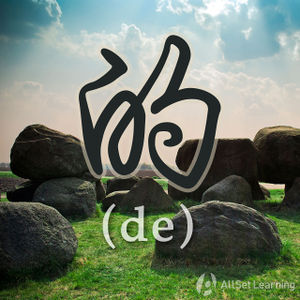Difference between revisions of "Expressing possession with "de""
Yangrenjun (talk | contribs) |
|||
| Line 40: | Line 40: | ||
== Sources and further reading == | == Sources and further reading == | ||
| − | * [[Integrated Chinese: Level 1, Part 1 (3rd ed)]] ( | + | * [[Integrated Chinese: Level 1, Part 1 (3rd ed)]] (p. 45) [http://www.amazon.com/gp/product/0887276385/ref=as_li_ss_tl?ie=UTF8&tag=allset-20&linkCode=as2&camp=217145&creative=399369&creativeASIN=0887276385 →buy] |
| − | * [[New Practical Chinese Reader 1 (新实用汉语课本1)]] ( | + | * [[New Practical Chinese Reader 1 (新实用汉语课本1)]] (p. 87) [http://www.amazon.com/gp/product/7561910401/ref=as_li_ss_tl?ie=UTF8&tag=allset-20&linkCode=as2&camp=217145&creative=399369&creativeASIN=7561910401 →buy] |
* [[New Practical Chinese Reader 1 (新实用汉语课本1)(2nd ed)]] (pp. 101-2) [http://www.amazon.com/gp/product/7561926235/ref%3das_li_ss_tl?ie=UTF8&tag=allset-20&linkCode=as2&camp=217145&creative=399373&creativeASIN=7561926235 →buy] | * [[New Practical Chinese Reader 1 (新实用汉语课本1)(2nd ed)]] (pp. 101-2) [http://www.amazon.com/gp/product/7561926235/ref%3das_li_ss_tl?ie=UTF8&tag=allset-20&linkCode=as2&camp=217145&creative=399373&creativeASIN=7561926235 →buy] | ||
* [[New Practical Chinese Reader 2 (新实用汉语课本2)]] (pp. 64-5) [http://www.amazon.com/gp/product/7561911297/ref=as_li_ss_tl?ie=UTF8&tag=allset-20&linkCode=as2&camp=217145&creative=399369&creativeASIN=7561911297 →buy] | * [[New Practical Chinese Reader 2 (新实用汉语课本2)]] (pp. 64-5) [http://www.amazon.com/gp/product/7561911297/ref=as_li_ss_tl?ie=UTF8&tag=allset-20&linkCode=as2&camp=217145&creative=399369&creativeASIN=7561911297 →buy] | ||
Revision as of 08:18, 14 March 2014
-
Level
-
Similar to
-
Used for
-
Keywords
In Chinese, possession is marked with the particle 的 (de). This particle works in a similar way to 's (apostrophe s) in English, but is used much more widely.
Structure
Noun 1 + 的 + Noun 2
This means "Noun 1's Noun 2" (where Noun 2 belongs to Noun 1).
The structure is super simple. It will take a bit of time before you realize how truly universal this pattern is. It doesn't matter whether the "Noun 1" is a person, place, or thing, or even if it's a pronoun (like "he," "she," or "it"). The structure stays consistent.
Examples
- 我 的 老师 my teacher
- 你 的 啤酒 your beer
- 他 的 书 his book
- 他们 的 东西 their stuff
- 小李 的 手机 Xiao Li's cell phone
- 我们 的 茶our tea
- 我 家 的 小狗my family's puppy
- 公司 的 老板the company's boss
- 上海 的 美女Shanghai's beautiful women
- 美女 的 朋友the beautiful woman's friend



